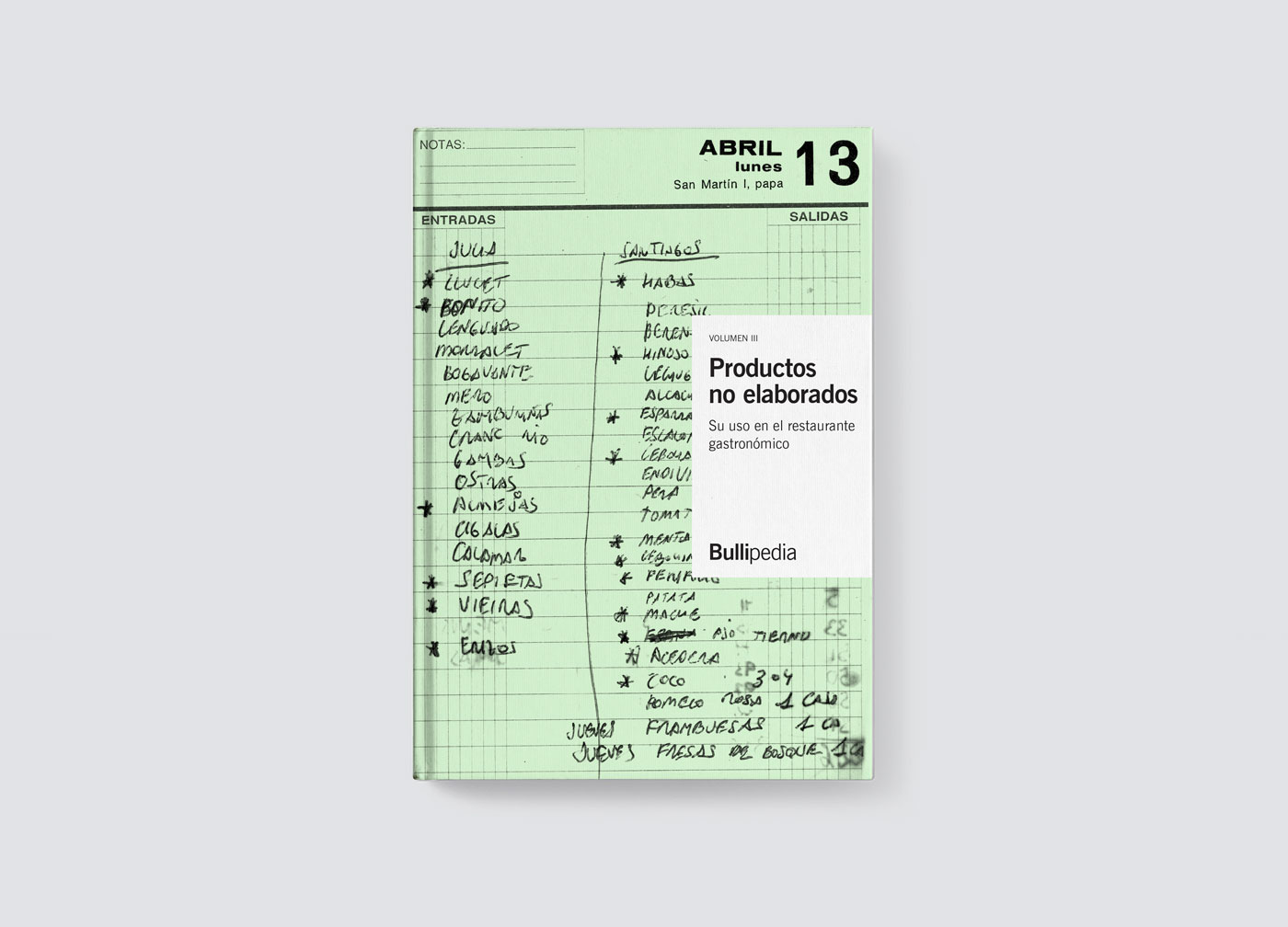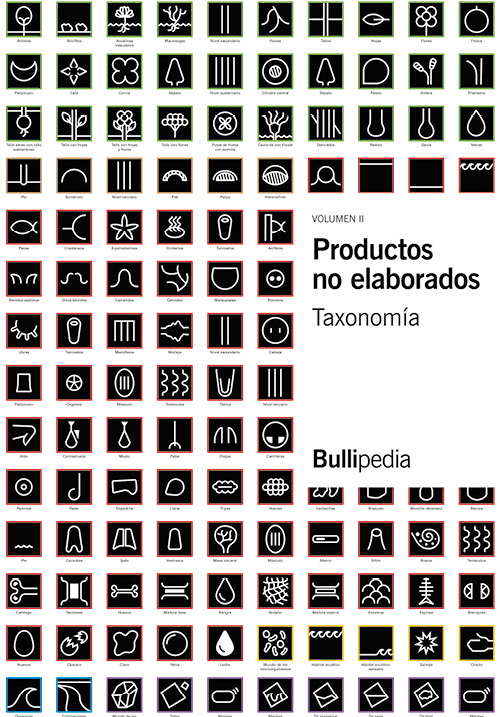Productos no elaborados. Su uso en el restaurante gastronómico (Volumen III)
Unelaborated Products. Their use in the fine dining restaurant is the third volume of the Unelaborated Products Sapiens, directed by Ferran Adrià. It draws together the available knowledge concerning unelaborated products in fields such as primary production, chemical composition, purchasing and reception in the restaurant, preservation and storage, food safety and marketing. All these aspects then lead us to the restaurant’s cuisine, its raison d’etre. And consequently we will turn our attention to how unelaborated products are used in the kitchen, the techniques and tools that are employed to transform them and, above all, how the customer experiences their consumption in the restaurant.
640 pages long
230 x 330
Hard cover
978-84-09-34045-3

This is the third Bullipedia volume dedicated to unelaborated products. It is preceded by Volume I, in which we contextualise and define products in a comprehensive manner, and by Volume II, in which the taxonomy and classification of unelaborated products are presented so as to analyse them from different angles and perspectives.
Our investigation begins in the primary sector, addressing the economic activities concerned with the extraction of products from the natural environment. We explain how products are obtained and meet the actors who make it possible for them to reach markets and restaurants. Activities such as agriculture, livestock farming and fishing have an indispensable link to the kitchen.
Then we turn our attention to the chemical composition of unelaborated products. Without wanting to turn the reader into a chemist, we feel that knowledge of certain basics of chemistry is advantageous for cooks planning their elaboration processes and forecasting the results of these. We explain the functionality of carbohydrates, proteins, lipids, vitamins and minerals as an introduction to nutritional and organoleptic concepts.
Next we look at the role of the restaurant. Product purchase is the starting point of the gastronomic offer, and if the restaurant is to be a success a knowledge of the flavour, seasonality and composition of unelaborated products is necessary. In the same way, knowledge of market mechanisms is fundamental. In this section we look at suppliers, producers, traders, tools for stock control and placing orders, etc.
Correct product storage and preservation in the restaurant is essential. Even the most delicious product will spoil quickly if the management of this aspect is poor. Knowing the mechanisms for good preservation allows us to be more efficient and profitable in our day-to-day work.
However, the greatest responsibility of restaurateurs and their staff is to ensure that everything reaches the table in the best possible condition. To this end, hygiene and food safety are fundamental themes, and are covered in detail in this volume.
Marketing comprises that set of actions taken to make a company profitable and entice potential customers. Unelaborated products are allies to the marketing strategy due to their quality, exclusivity and gastronomic value. Restaurants should take good note of this.
If all the previous operations in the chain have taken place satisfactorily, we reach the point in which unelaborated products become the main resource for cooking. They can be transformed in a thousand ways, combining them, applying a wide number of techniques to them, striving to turn them into culinary delicacies of the highest quality. To facilitate this, we need further resources such as cooking and serving tools, undoubtedly the ideal pairing for our products.
Finally, the cooked products are placed on the table before the customers, for their pleasure and appreciation. To understand how this experience works, we will place ourselves at the table with them and become diners, too.
We mustn’t overlook the role of creation and innovation, because understanding the creative methods allows us to maximise the potential of our products and continue the development of our gastronomic offer.
In summary, this is a book designed for professionals in the sector, which deals with all aspects related to unelaborated products in the fine dining restaurant.
In this section is a short summary of each chapter of the book
Download in PDF
INTRODUCTION
A PROJECT OF WIDE SCOPE DEDICATED TO UNDERSTANDING GASTRONOMIC PRODUCTS
Continue reading >

CHAPTER 1
SOURCING AND ORIGIN OF PRODUCTS: FROM CREATION TO PRODUCTION
Continue reading >

CHAPTER 2
THE CHEMICAL COMPOSITION OF UNELABORATED PRODUCTS (UPs)
Continue reading >

CHAPTER 4
PURCHASING UPs IN THE FINE DINING RESTAURANT
Continue reading >

CHAPTER 4
THE STORAGE AND PRESERVATION OF UPs IN THE RESTAURANT
Continue reading >

CHAPTER 5
THE HYGIENE AND FOOD SAFETY OF UPs
Continue reading >

CHAPTER 6
COMMERCIALISATION, MARKETING AND COMMUNICATION: FUNCTIONS AND STRUCTURE
Continue reading >

CHAPTER 7
THE PRODUCT IN THE GASTRONOMIC OFFER
Continue reading >

CHAPTER 8
HOW DO WE REPRODUCE THE GASTRONOMIC OFFER?
Continue reading >

CHAPTER 9
THE DINING EXPERIENCE: HOW THE DINER EXPERIENCES, TASTES AND PERCEIVES THE FOOD.
Continue reading >

CHAPTER 10
CREATION AND INNOVATION OF UNELABORATED PRODUCTS
Continue reading >

GLOSSARY
GLOSSARY
Continue reading >



























